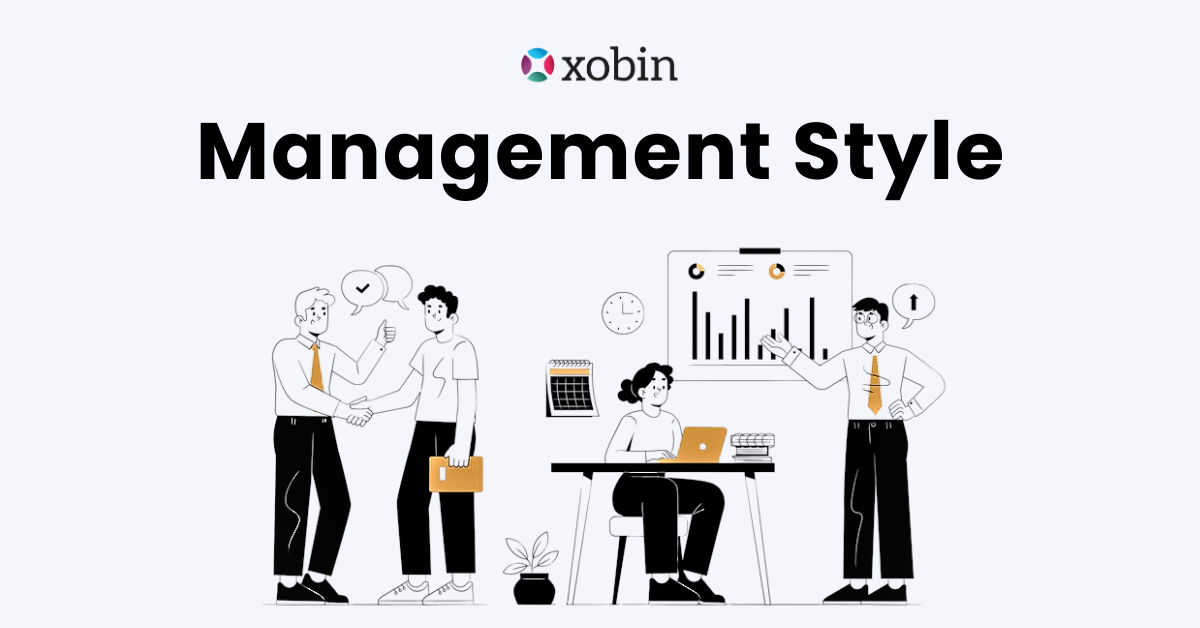XOBIPEDIA
HR Glossary

Strengthening the bond between the employees and bringing the best out of them as a team comes under organizational management styles.
The employees must feel satisfied with their employees and job and deliver their best which comes under the responsibility of the management. The management must provide the employees with a stress-free work environment.
Now the question comes is,
What is Management Style?
The method of dealing with employees by a manager at the workplace is called as management style.
The management or the superiors decides the course of action as per the organization’s culture and workplace conditions. The nature of the workforce also affects the style of management’s work.
Effective management is the one that can adjust its management style according to the different factors while successfully achieving targets too. These factors can be the corporate culture of the company, staff skill levels, or consumers.

What are the types of Management Styles?
Autocratic Management Styles
In this style of management, the ideas and suggestions of the subordinates are not welcomed by the superiors. The leaders take sole responsibility for decision-making here.
The variations of this type of style are authoritative, persuasive, and paternalistic. The employees do not have the liberty to make any decisions.
Democratic Management Styles
Here the decision style is group-oriented, which means that everything is decision is made according to the entire group and not only on the manager’s choice.
Committees and not superiority do things here.
Laissez Management Styles
In this style of management, the idea is that system governs itself. Here the leaders let the employees figure things out for themselves. Today, the market is based on this ideology of having a free market.
Which ones are the most effective Management Styles?
To successfully manage the workforce, a leader must be able to switch from one management style to another with ease. An organization cannot succeed with a boss that won’t listen to any suggestions or one that won’t do anything on their own.
A perfect balance can only be achieved when the leader understands the work environment, what it lacks, and its needs. This helps in achieving the goals successfully.
We hope this article helped you. Explore our HR Glossary for more interesting articles.

Recommended Content

Video Interviews can simplify your hiring
Don’t let a packed schedule be a hindrance in recruitment. Use structured interviews with the power of video to screen applicants. Understand the communication skills, motivation, and job skills using video interviews.

Pre-employment Testing: The Complete Guide
Move over from pen-paper based tests and manually checked assignments to pre-employment assessments. Democratize your organization hiring by screening for skills before you interview.

How can Employers adapt to Remote Hiring
With most jobs going remote, your best applicants could be in Melbourne or Miami. From remote screening and virtual interviews to remote onboarding, Learn the best practices to get started.


